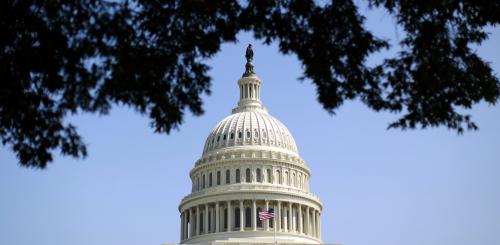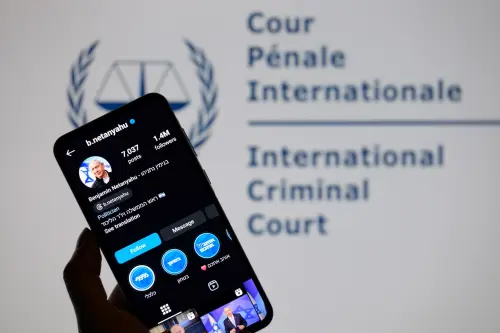President Obama first requested $1.9 billion in emergency funds to address the Zika outbreak in February, and now, nearly three months later, both chambers have finally begun debating legislation on the issue. On Tuesday, the Senate took initial action in favor of allocating $1.1 billion to Zika-related efforts. A final vote on the provision, which is an amendment to a broader spending bill, is likely later this week. House Republicans, meanwhile, released a standalone bill, which would devote $622 million to the crisis, drawn from unspent funds from the 2014 Ebola outbreak and “other unused administrative funding” within the Department of Health and Human Services.
To date, most of the conversation about the Zika package has focused on the issue of offsets, or whether Congress should make equivalent cuts in other federal programs. Casting the issue as a narrow partisan fight about paying for spending, however, obscures other important features of the Zika debate. First, Congress’s struggle to allocate money to address the outbreak illustrates how, when the regular congressional budget process doesn’t work well, the consequences extend beyond the 12 annual appropriations bills, making it harder for Congress to respond to urgent, emergency circumstances that arise unexpectedly. Since 2001, according to the Congressional Research Service, only a quarter of appropriations bills have been enacted as standalone measures. (The rest have been addressed through omnibus legislation, continuing resolutions that maintain funding at previous levels, or a combination of those two approaches.) This trend towards omnibus legislating has also meant fewer opportunities to debate individual spending bills on the floor. Between 2001 and 2008, for example, the House considered an average of 9.6 appropriations bills per year on the floor. For the 2009-2015 period, by comparison, that average was seven measures each year.
When members have fewer other outlets for both policy and political conflicts, we may see them transfer the debates that would otherwise be hashed out on the individual appropriations bills to the emergency measures. Broadening the terms of engagement has the potential to slow down the legislative process emergency bills—which is exactly the opposite of what we’d hope for when an urgent problem is on the table. This dynamic plays out in several ways. First, fiscal conservatives, especially in the House, may have reason to see emergency supplemental measures as especially fertile ground on which to make their stand for fiscal discipline. House Republican leaders know that Republican deficit hawks are likely to oppose, on principle, many large, omnibus spending bills, as is reflected by the vote margins on recent such measures. As a result, leaders have little reason to accommodate the preferences of the most hawkish members in pursuit of final deals that keep the government running.
On narrower, emergency measures, however, conservatives have been much more successful at exerting leverage over the contours of spending bills. In 2011, for example, House conservatives secured offsets for funding for responses to Hurricane Irene and Tropical Storm Lee. In 2013, while they were unsuccessful at requiring a Hurricane Sandy relief measure to be paid for, they did successfully negotiate the removal of some provisions that “resembled pork-barrel spending.” Given their past success, and their expectations that the deck may be stacked against them on other spending bills, deficit hawks have an incentive to stand their ground on narrower measures.
On the other side, if legislators who favor government spending are uncertain about how the regular appropriations process will proceed, they have an incentive to define “emergency” with a broad brush, including provisions on which there was disagreement about whether the designation should have applied. Notable examples include 2009’s “cash for clunkers” program and funding for additional border patrol agents in 2010—not to mention the disputes over whether emergency supplemental measures are an appropriate way to fund military activities in Iraq and Afghanistan that have been ongoing for more than a decade. Evidence on the prevalence of the practice is limited; a 2008 GAO study, for example, identified only five percent of provisions in supplemental appropriations bills between 1997 and 2006 as “not clearly consistent with the [emergency designation] criteria” or not containing enough information on which to base a judgement. Even the possibility of extraneous provisions, however, can shape deliberation. If opponents of the “quasi-emergency” provisions have reason to believe that proponents might try to include them, it only increases their motivation to stand firm against supplemental measures, especially those that are not offset.
It is not just the breakdown of the appropriations process, however, that has led Congress to struggle with funding to fight Zika. Congress, composed of re-election-minded legislators, regularly finds it more difficult to build a coalition to prevent an emergency than to respond to one. When a natural disaster, such as a hurricane, earthquake, or drought, occurs, we often see members from the affected areas jump to action, using concrete evidence from their states and districts to build support for a relief package. In 2013, for example, efforts by northeastern Republicans from states affected by Hurricane Sandy were key to overcoming intra-party opposition to a relief package in the House. Research suggests, moreover, that delivering this sort of relief may pay electoral dividends. Work by Jowei Chen, for example, finds that, in Florida, receiving FEMA aid made Republican voters—that is, those identifying with the party in power—more likely and Democratic voters less likely to turn out in the 2004 presidential election. Other research by Andrew Reeves, meanwhile, documents how a presidential disaster declaration—often a precursor to emergency spending by Congress—can increase the president’s vote share in the next election. It appears, however, that voters do not deliver the same kind of rewards for preventing disasters. Research by Andrew Healy and Neil Malhotra suggests that allocating more money for disaster preparedness does not translate into more votes for the incumbent party of the president in the same way that more relief spending does. When the goal is to avert an emergency, then, proponents of preventative spending may find themselves fighting an uphill battle.
As the two chambers work to chart a way forward on Zika funding, they will need to find a way to overcome these challenges. President Obama has threatened to veto both the House’s version and the broader spending bill to which the Senate’s proposal is an amendment. At the same time, House Appropriations chair Hal Rogers (R-Ky.) has stressed that the supplemental approach is the only way to get the funds out the door quickly. Given the current state of the congressional appropriations process, he may well be right—but it is exactly that dysfunction that has heightened the stakes for both sides on emergency funding bills.
The Brookings Institution is committed to quality, independence, and impact.
We are supported by a diverse array of funders. In line with our values and policies, each Brookings publication represents the sole views of its author(s).




Commentary
What emergency Zika funding tells us about congressional dysfunction
May 18, 2016